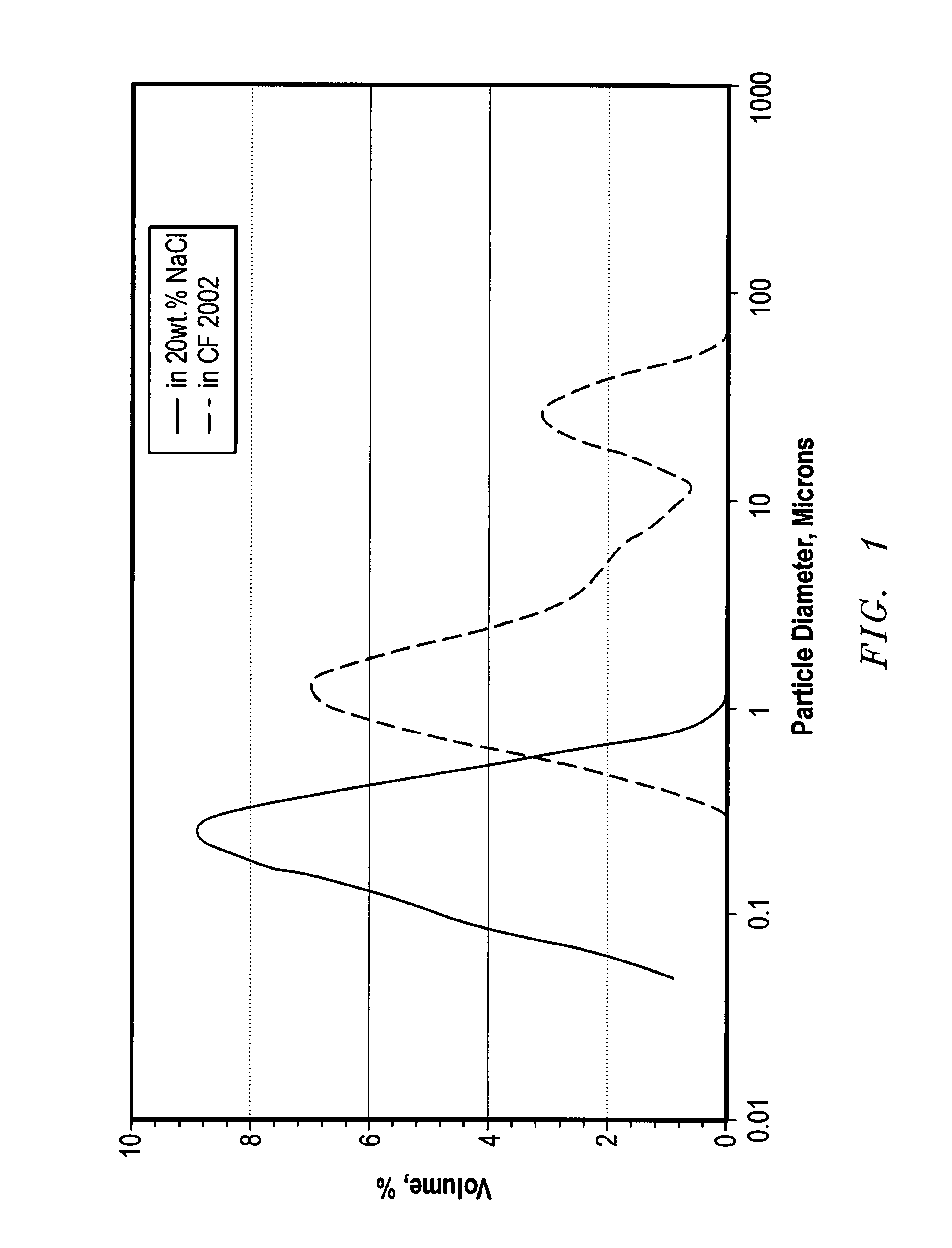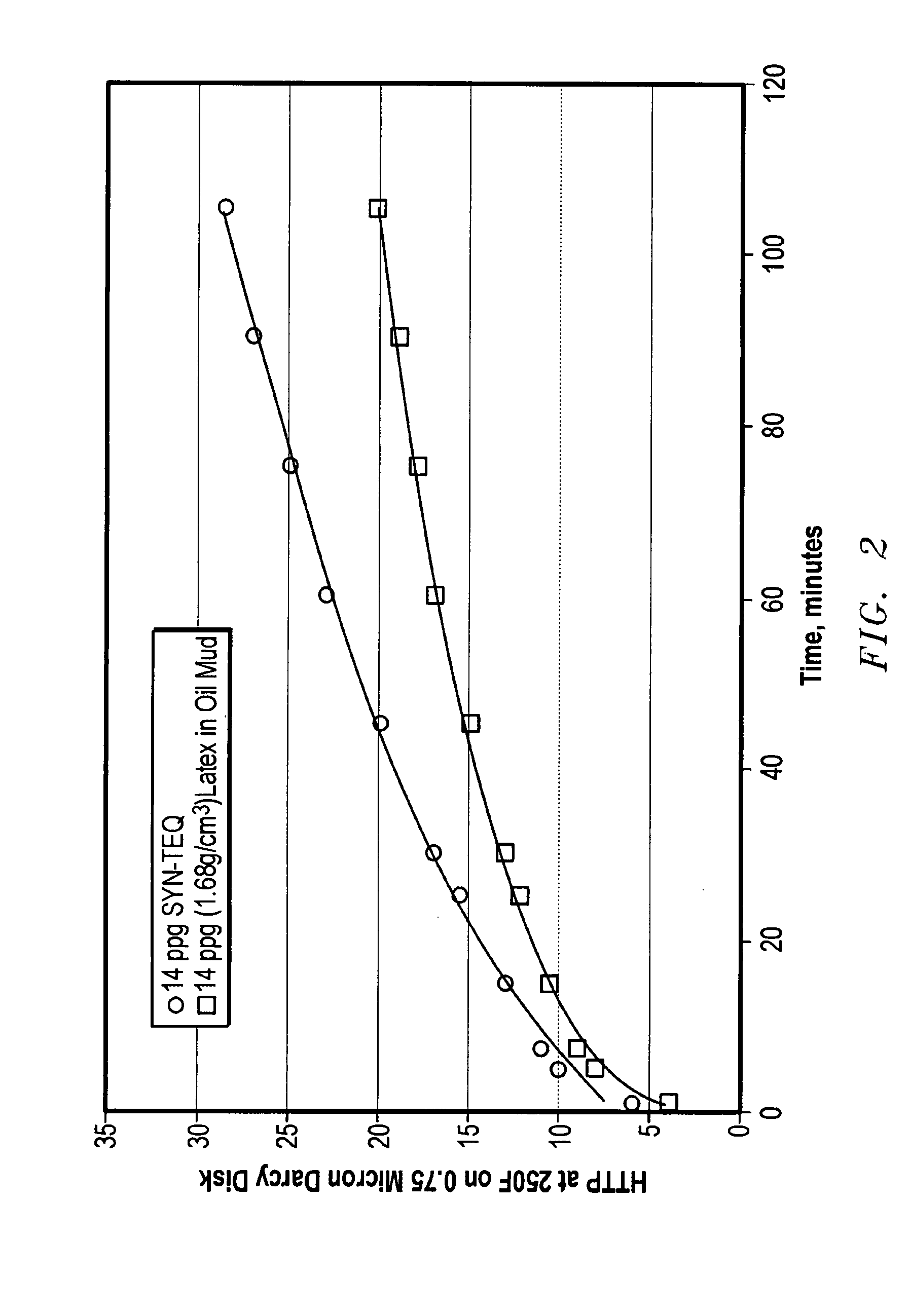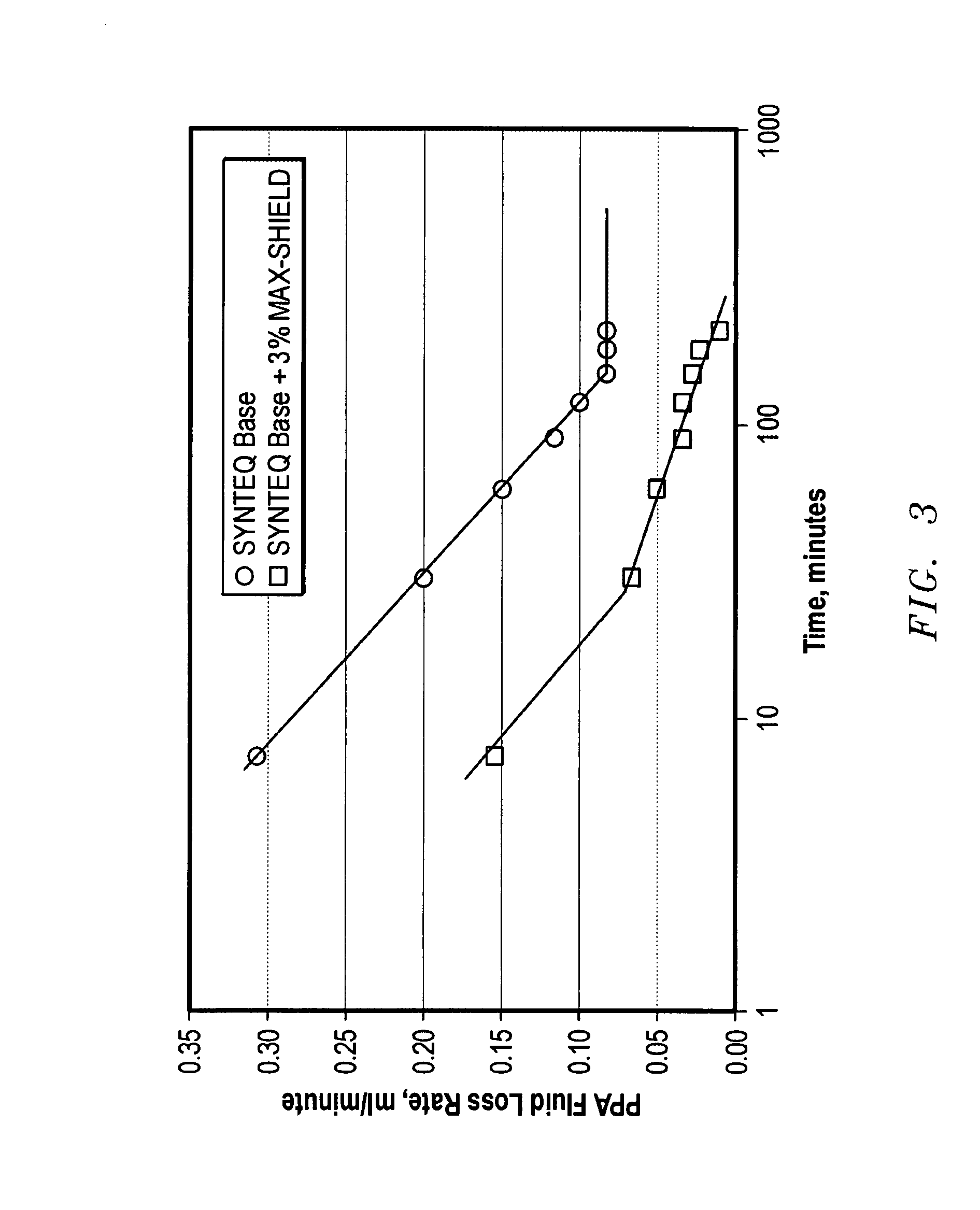Invert emulsion drilling fluid systems comprising an emulsified aqueous phase comprising dispersed integral latex particles
a technology of emulsion and fluid system, which is applied in the direction of sealing/packing, other chemical processes, borehole/well accessories, etc., can solve the problems of high risk of loss of circulation, and shutdown of petroleum recovery operations
- Summary
- Abstract
- Description
- Claims
- Application Information
AI Technical Summary
Benefits of technology
Problems solved by technology
Method used
Image
Examples
example 1
[0045]FIG. 1 is a graph comparing the particle size distribution of MAX-SHIELD® (about 50 wt % sulfonated styrene / butadiene particles dispersed in water) in (a) 20 wt. % NaCl in water, or (b) CF-2002. The particle size was measured by a Malvern Mastersizer Particle Size Analyzer. The average diameter of the latex particles in the CF-2002™ was approximately 1-2 microns. In contrast, the average diameter of the latex particles in the NaCl solution was about 0.1-0.2 microns. The foregoing implies that the water droplets in the CF-2002™ contained about 500 latex particles.
example 2
[0046]The following fluids were prepared and the rheological properties were measured. All fluids were mixed and measurements performed according to Recommended Practice Standard Procedure for Field Testing Oil-Based Drilling Fluids, API Recommended Practice 13B-2, Third Edition February 1998, and / or established Baker Hughes Drilling Fluid procedures. The ingredients were mixed in the order shown in the table, using a Prince Castle mixer at 11000 rpm for 30 minutes.
[0047]Initial Bingham Plastic rheological properties of plastic viscosity, yield point, ten second gels, and ten minute gels were measured using a FANN 35A viscometer at 120° F. (49° C.). Electrical stability also was measured. The components and results are given in the following Table:
[0048]
Unweighted Brine-Unweighted Latex-in-Formulationin-OilBrine-in-OilCF-2002 ™, ml200200CARBO-GEL ®, g22OMNI-MUL ® US, g161625 wt % CaCl2, ml35—1:1 20 wt % NaCl and—35MAX-SHIELD ®, ml600 rpm at 120° F. (49° C.)128117300 rpm9380200 rpm75...
example 3
[0050]Fluids having the composition shown in the following Table were prepared and measurements made using the procedures of Example 1. In addition, HTHP fluid loss at 121° C. (250° F.) through 0.4 micron and 0.75 micron Darcy disks was measured before and after aging. The Darcy disks conformed to ASTM E11 requirements. The fluid loss over time is shown in FIGS. 2 and 3. Results are given in the following Table:
[0051]
(1.68 g / cm3)(1.68 g / cm3)14 ppg latex-in-14 ppg brine-in-oilbrine-in-oilCF-2002 ™, m3 (bbl)0.09 (0.57)0.09 (0.57)CARBO-GEL ®, g / l5.7 (2) 5.7 (2) (lb / bbl)OMNI-MUL ® US, g / l45.1 (16) 45.1 (16) (lb / bbl)25 wt. % CaCl2, m3 (bbl)0.016 (0.1) —1:1 20 wt. % NaCl and—0.016MAX-SHIELD ®, m30.016 (0.1) (bbl)MIL-BAR ™, g / l (lb / bbl)934 (327)934 (327)CARBO-TROL ® HT,5.7 (2) 5.7 (2) g / l (lb / bbl)REV DUST ™, g / l78 (27)78 (27)(lb / bbl)Initial Properties49° C.66° C.49° C.66° C.(120° F.)(150° F.)(120° F.)(150° F.)600 rpm @ 49° C.54436955(120° F.)300 rpm32243932200 rpm24183024100 rpm16121...
PUM
| Property | Measurement | Unit |
|---|---|---|
| wt. % | aaaaa | aaaaa |
| temperature | aaaaa | aaaaa |
| pressure | aaaaa | aaaaa |
Abstract
Description
Claims
Application Information
 Login to View More
Login to View More - R&D
- Intellectual Property
- Life Sciences
- Materials
- Tech Scout
- Unparalleled Data Quality
- Higher Quality Content
- 60% Fewer Hallucinations
Browse by: Latest US Patents, China's latest patents, Technical Efficacy Thesaurus, Application Domain, Technology Topic, Popular Technical Reports.
© 2025 PatSnap. All rights reserved.Legal|Privacy policy|Modern Slavery Act Transparency Statement|Sitemap|About US| Contact US: help@patsnap.com



